Ghasem Hajizadeh
Painting, Fictional Nostalgia, Pop Art and Contemporary Iranian Art
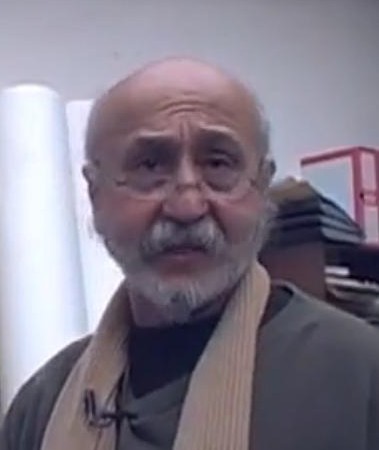
Ghasem Hajizadeh's art is intriguing and enticing, containing both energetic colour and sombre tones. His paintings draw the viewer in, through their composition, pop art and figurative style, developing a timeless essence and feel throughout.
Hajizadeh’s art incorporates a dialogue with portraiture, made up of either groups or individuals, his friends or past popular icons.
Throughout his work, the artist uses old family photographs and historical images as an anchor, seemingly absorbed by their faded quality, an element which arises in the artist's paintings, where figures often form erased sections.
Ghasem Hajizadeh’s paintings are bathed in historical references, reshaping ideas, dismantling gender constructs, celebrating popular icons, art and culture from Iran fused with the artist's experience of living in France and the USA, accumulate into what he calls fictional nostalgia, carried across much of his art and made up of his reflections and affection for the country of his birth.
His artistic skill that fill his canvases, render his paintings both alluring and interesting, some of which will be exhibited at MENART FAIR with AMENOR CONTEMPORARY-curated by Leila Varasteh, prior to which, the artist shared with us some of his thoughts.
.webp)
The Ceremony, 2008, Oil on canvas
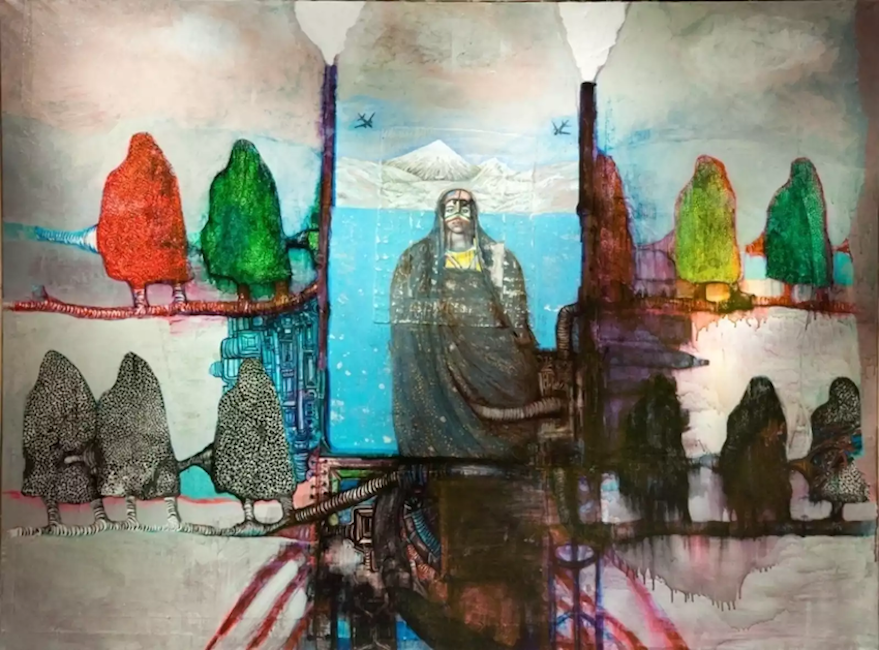
Egyptian woman, 2005, Oil on canvas, 381 × 508 × 12.7 cm
What first evoked your interest in art?
I was born a painter
Can you share with us a little on your life in Iran before you left for Paris, and what were your art interests and influences then?
In Iran I was considered a professional painter.
Old Iranian pictures intrigued me into liking pop art, later introducing it to my country.
Exile and memories have infused your artworks, what do you wish to convey through them?
It is quite natural.
My exile was voluntarily and not forced,
I miss Iran,
In all my paintings I think it’s quite apparent that I miss my homeland terribly.
Sometimes I feel I am missing the opportunity to live in the present simply because the past has a very strong pull over me.
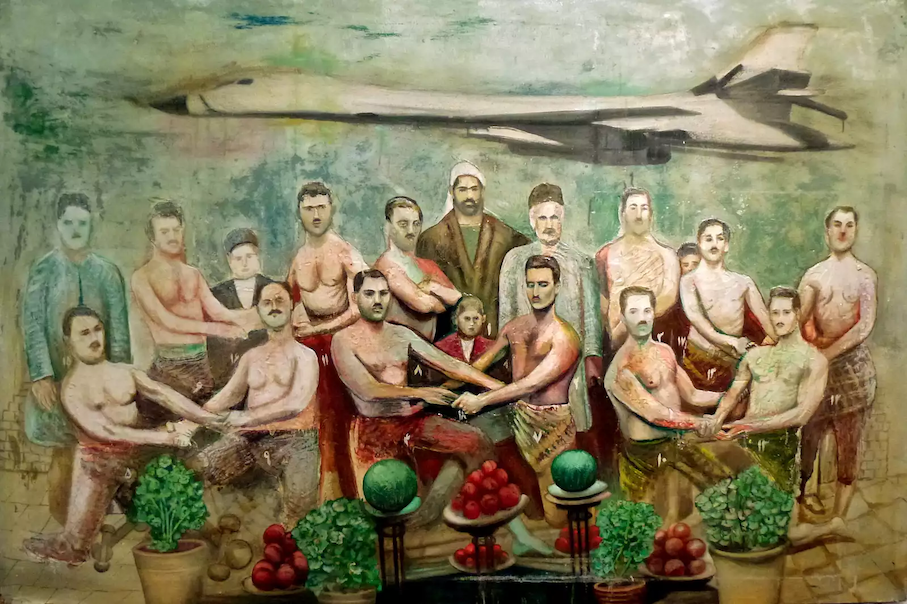
Concord, 2010-2016, Over cloth, 130 × 195 cm
You have referred to your art as ‘fictional nostalgia’ what do you mean by that?
Fictional Nostalgia; I carry a profound sorrow that I keep personal and don’t let out, I only express it through artistic means.
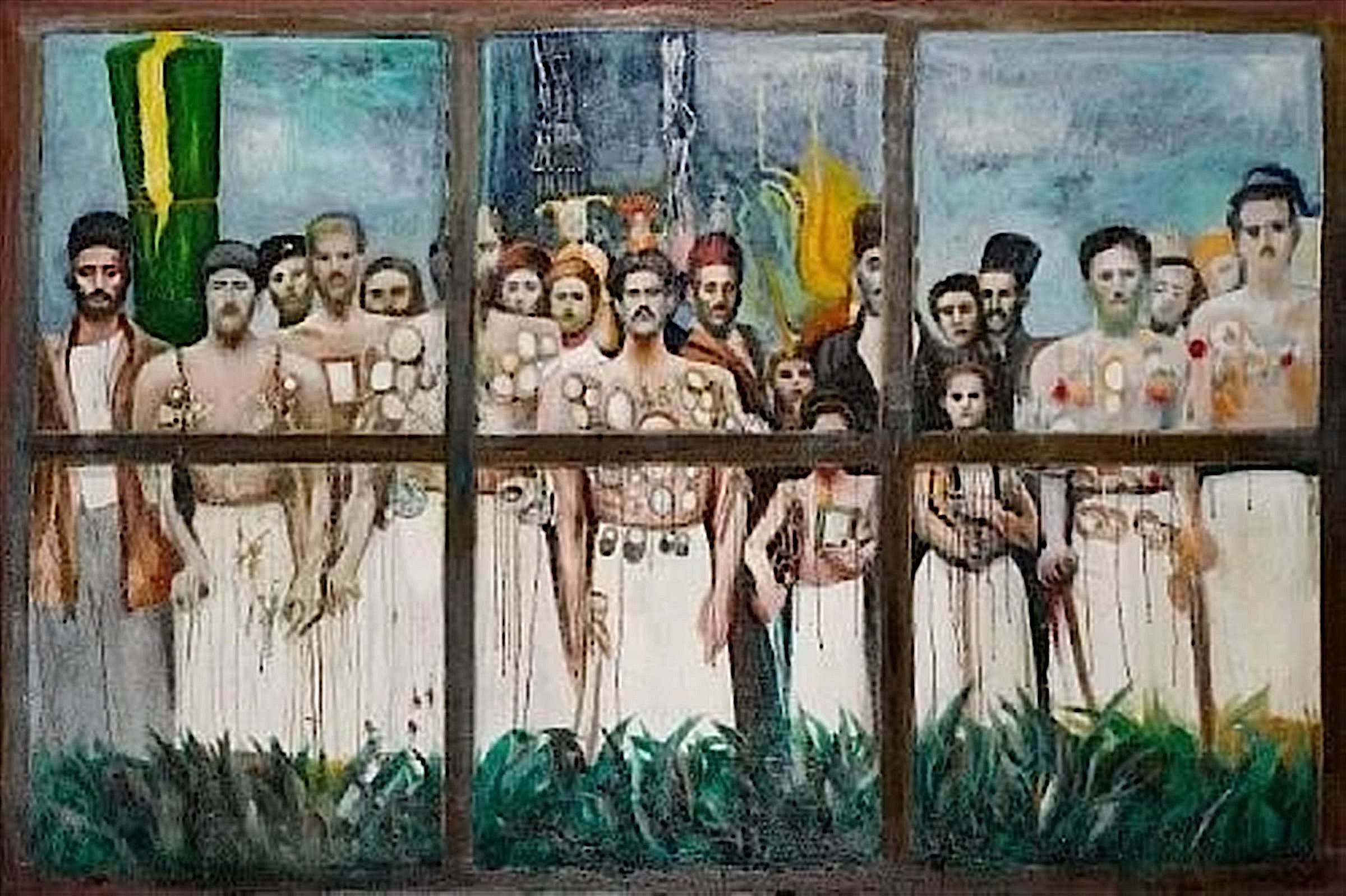
'Nostalgia' , 1993, mixed media on canvas, 200 x 300cm
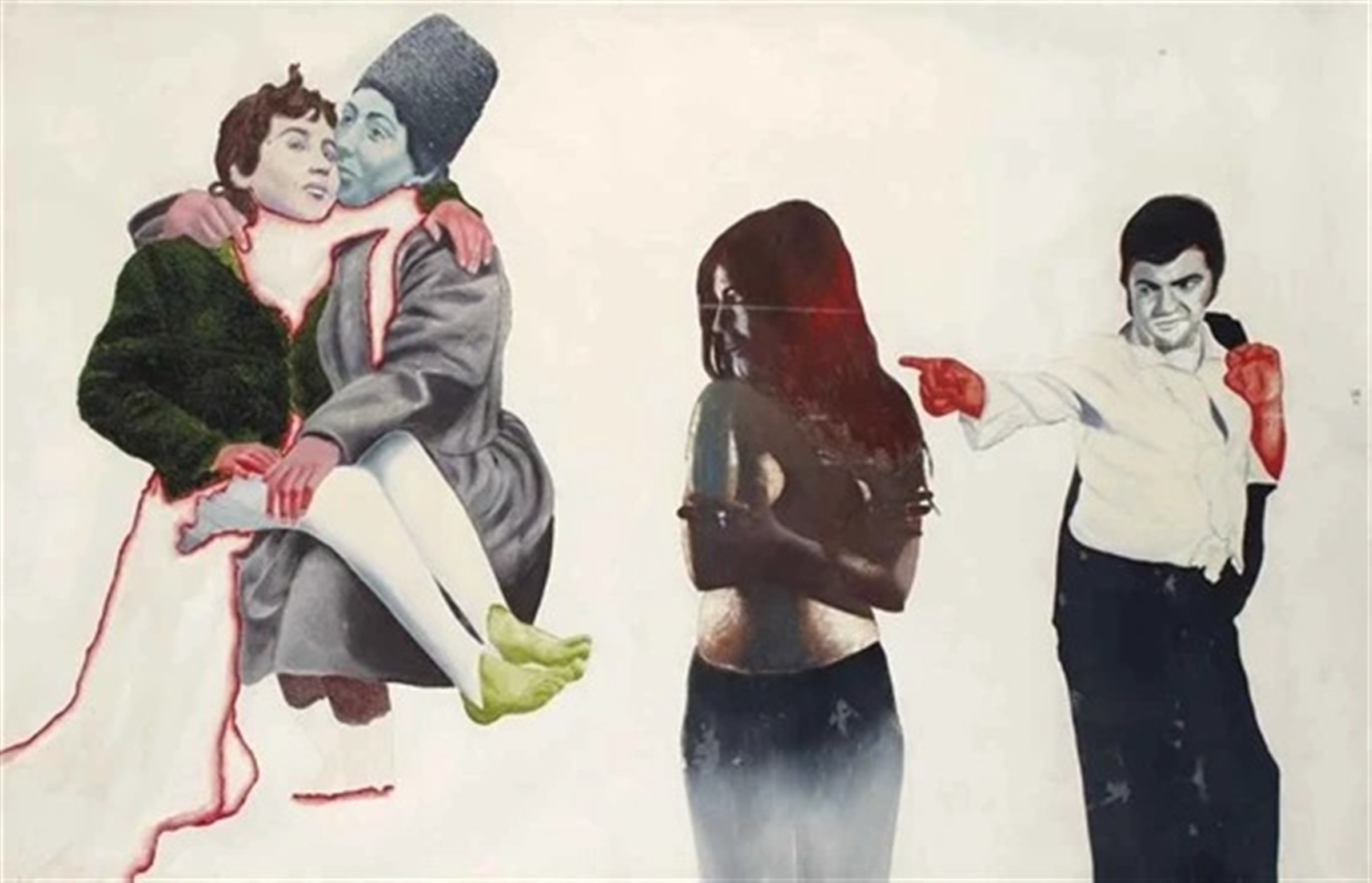
Yesterday-Today, 1975, oil in canvas, 135 x 199 cm
Your artistic style is a mixture of figurative and Pop art, using mixed media across your artworks; what is your creative process like? And what does your love for old photographs that impact your paintings embody?
The old photographs draw my intrigue .
I contrast the aged pictures with collages of more recent scenes.
With improvisation being the sole director of my gestures.
Some of your artworks include erased faces or sections, what does that represent for you?
Unfinished business.
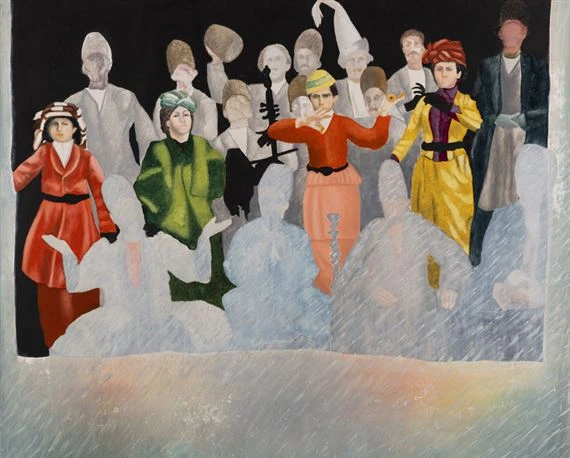
Ghasem Hajizadeh, Untitled, 1976, oil on canvas, 133×166 cm
You have spoken about being in dialogue with and through your portraits, can you tell us more about that?
I usually know my subjects quite well and the research I have done enables me to imagine and participate in their lives while painting.
To illustrate, I can explain the thought process that went into my drawing of the lady in the background of the Sadegh Hedayat portrait.
I create a dialogue in my mind with Sadegh Hedayat.
This canvas represents my interpretation of Sadegh Hedayat description of the perfect woman in “ The blind owl”.
How much have feelings and notions of migration, separation, politics and rights been injected within your art which you bring out through the collective or individual portrait?
I usually draw portraits of political figures years after their passing. I make sure their chapter is closed before drawing them.
With your art looking back and forward at identity, varied cultural elements from your lived experiences come together in the artworks.
Do you think art has the power to unite?
The revolution of Mexico started with a painting.
Ghasem Hajizadeh art will be exhibited at MENART Fair in Paris with AMENOR CONTEMPORARY curated by Leila Varasteh, showing the artwork 'Separation''
Separation, 2012, mixed media on canvas, 200 x 200 cm
Ghasem Hajizadeh and AMENOR CONTEMPORARY
Exhibtion at Amenor Contemporary curated by Leila Varasteh
at MENART FAIR from the 19th to 22nd May at CORNETTE DE SAINT CYR – PARIS
pictures courtesy of Ghasem Hajizadeh and AMENOR CONTEMPORARY
images © Ghasem Hajizadeh
Interview as part of a series Art Breath x MENART FAIR
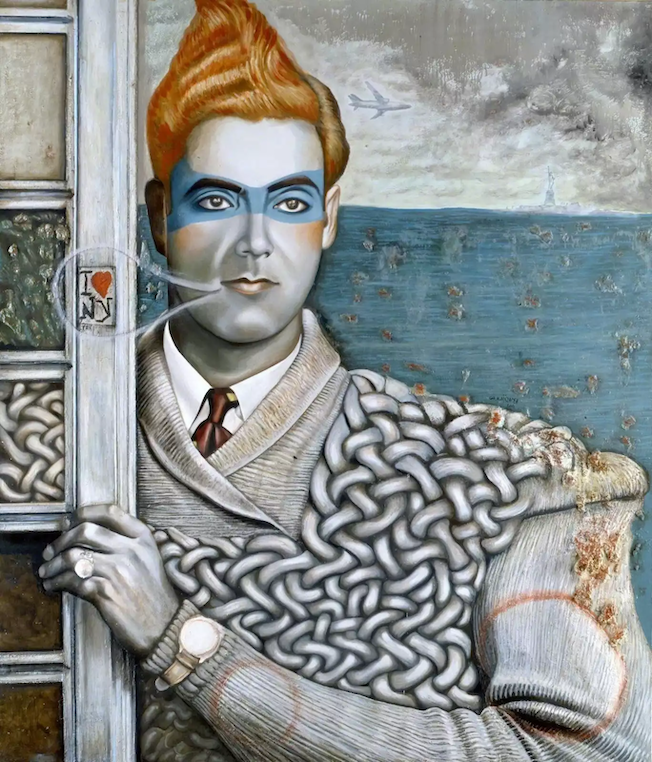
I love NY, 2001, Oil on canvas, 210 × 180 × 7 cm
Ghasem Hajizadeh born in 1947 in Lahijan, north of Iran, is a contemporary Iranian–French painter and a pioneering Pop art figure in contemporary Iranian art. He received his diploma in arts from Tehran High School of Fine Arts in 1967. In 1972, Hajizadeh participated in the first art exhibition, held by Iran–America Society and in 2015 his art was part of the Pavilion of Iran at the 56th International Art Exhibition – la Biennale di Venezia. Solo exhibition have been held at Goethe Institute, Tehran. Seyhoun Gallery, Tehran. Gallery G.20, Arnhem, Holland. In 1999 - 2004 as part of Salon d’Automne, Paris; 2008: Exhibition in New York in LTMH Gallery; 2009: Galerie Françoise Souchaud, Lyon; amongst others and Group exhibitions include UNESCO Exhibition, and Ghandris Mess Gallery, Tehran. Contemporary Iranian artist, Exhibition Center, Tehran. In 1974 at the 7th Festival of Art & Culture: The Works of Iranians Contempory Artists at the 100th; 1987: R.V.S. Gallery, Southampton to New York, United States; 1988 : L'Art pour la Vie , Institut Curie , Paris; Arts Olympiad in Seoul, South Korea; Revelation 89, 5th International Exhibition of Plastic Arts, space Lamartine, Paris SOS Armenia Art, Espace Pierre Cardin, Paris and 2011: Salon Comparaisons, Paris Biennale 109, Paris, amongst many others.
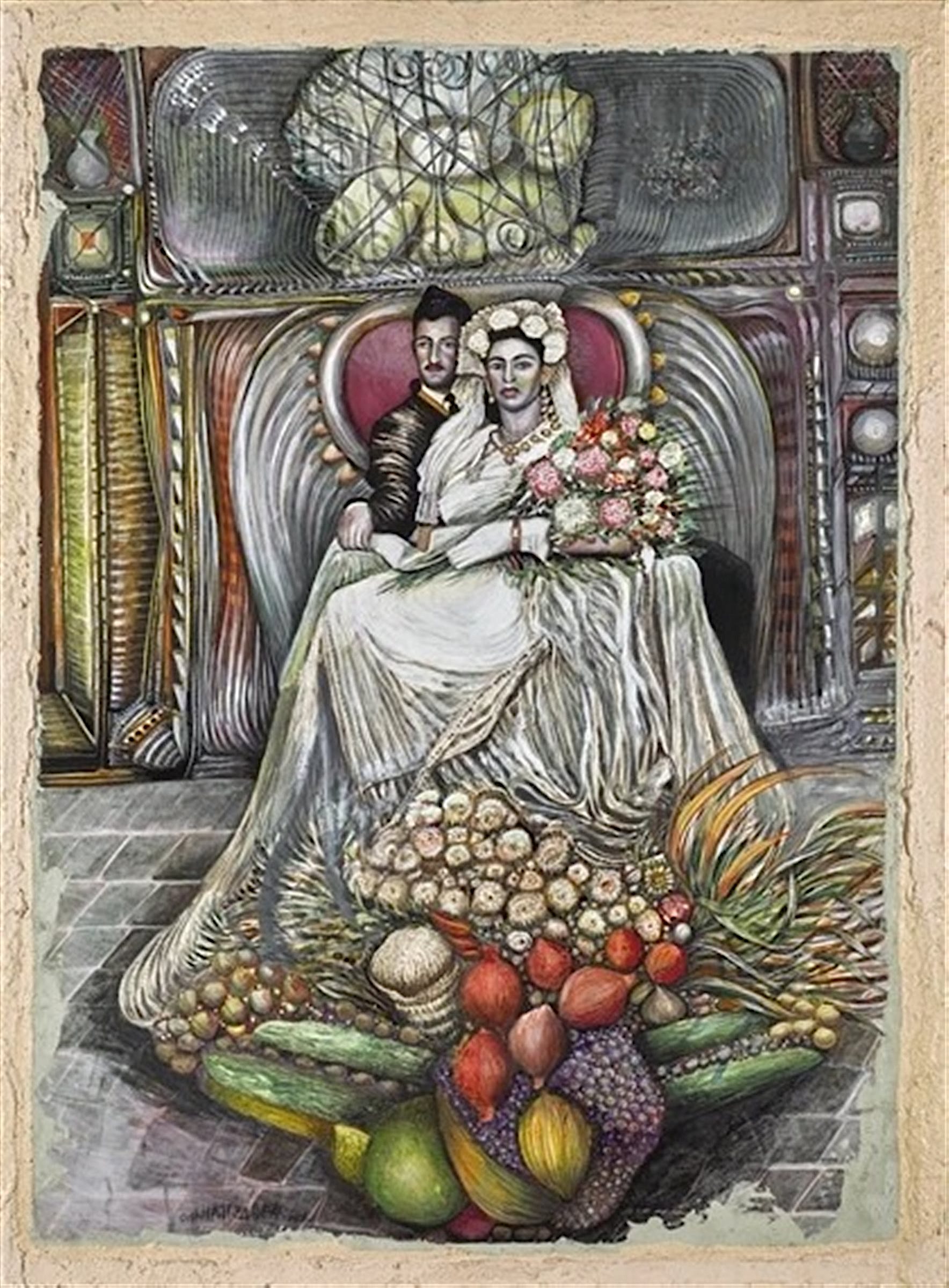
MARRIAGE PRIMEUR (FIRST MARRIAGE), 2008, 81×60 cm
.jpg)

